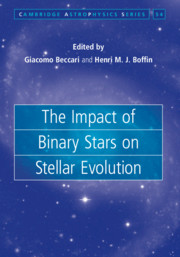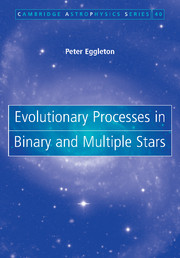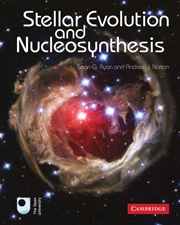The Impact of Binary Stars on Stellar Evolution
Stars are mostly found in binary and multiple systems, with at least 50% of all solar-like stars having companions; this fraction approaches 100% for the most massive stars. A large proportion of these systems interact and alter the structure and evolution of their components, leading to exotic objects such as Algol variables, blue stragglers and other chemically peculiar stars, but also to phenomena such as non-spherical planetary nebulae, supernovae and gamma-ray bursts. While it is understood that binaries play a critical role in the Initial Mass Function, the interactions among binary systems significantly affect the dynamical evolution of stellar clusters and galaxies. This interdisciplinary volume presents results from state-of-the-art models and observations aimed at studying the impact of binaries on stellar evolution in resolved and unresolved populations. Serving as a bridge between observational and theoretical astronomy, it is a comprehensive review for researchers and advanced students of astrophysics.
- The last few years have seen impressive observational and theoretical advancement in the field of binary stars
- Presents recent results from state-of-the-art models and observations, setting the stage for the next generation of observational and theoretical tools
- Provides an interdisciplinary approach between resolved and unresolved populations, with contributions from respected authors from a range of fields
Reviews & endorsements
'… the book as a whole is well in line with what one expects from CUP: the texts are well-written, and the illustrations clear. Every department and observatory needs a copy of this book. Every astrophysicist will find something of value.' Elizabeth Griffin, The Observatory
Product details
April 2019Adobe eBook Reader
9781108690515
0 pages
106 b/w illus.
This ISBN is for an eBook version which is distributed on our behalf by a third party.
Table of Contents
- Introduction
- 1. The zoo of binary stars Henri M. J. Boffin
- 2. Statistics of binary and multiple stars M. Moe
- 3. Gaia and LSST: their importance in binary star research L. Eyer, Nami Mowlavi, Isabelle Lecoeur-Taibi, Lorenzo Rimoldini, Berry Holl, Marc Audard, Simon Hodgkin, Dafydd W. Evans, Lukasz Wyrzykowsi, George Seabroke, Andrej Prša, and Dimitri Pourbaix
- 4. Population synthesis of binary stars R. G. Izzard and G. M. Halabi
- 5. Low- and intermediate-mass star evolution: open problems M. Salaris
- 6. The symbiotic stars U. Munari
- 7. Binary post-AGB stars as tracers of stellar evolution H. van Winckel
- 8. The importance of binarity in the formation and evolution of planetary nebulae D. Jones
- 9. Massive star evolution: binaries as two single stars C. Georgy and S. Ekström
- 10. Binarity at high masses H. Sana
- 11. Luminous blue variables: their formation and instability in the context of binary interactions A. Mehner
- 12. Type Ia supernovae: where are they coming from and where will they lead us? F. Patat and N. Hallakoun
- 13. Binary interactions and gamma-ray bursts N. R. Tanvir
- 14. Binaries as sources of gravitational waves G. Nelemans
- 15. The impact of binaries on the stellar initial mass function P. Kroupa and T. Jerabkova
- 16. The formation of binary stars: insights from theory and observation C. J. Clarke
- 17. The Maxwell's demon of star clusters M. Mapelli
- 18. Alternative stellar evolution pathways R. D. Mathieu and E. M. Leiner
- 19. Clocks and scales: playing with the physics of blue stragglers F. R. Ferraro and B. Lanzoni
- 20. Binaries at very low metallicity S. Lucatello
- 21. Population and spectral synthesis: it doesn't work without binaries J. J. Eldridge and E. R. Stanway.






